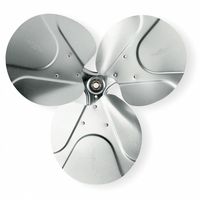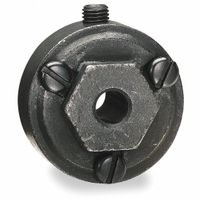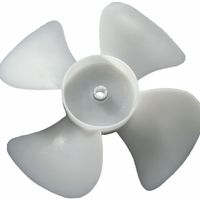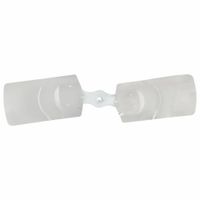Call +(254) 703 030 000 / 751 483 999 / 721 704 777
- Home
- Hvac And Refrigeration
- Fan Blades And Propellers
.....Read More
Frequently Asked Questions
What are the signs that fan blades or propellers need replacement in HVAC systems?
Please tell me what topic you would like me to elaborate on.
How do bent or pitted fan blades affect HVAC performance?
Bent or pitted fan blades significantly impact HVAC performance by disrupting the airflow, leading to reduced efficiency and potential system damage. These imperfections cause an imbalance in the fan, increasing vibration and noise. This imbalance forces the motor to work harder, consuming more energy and potentially leading to premature wear and tear.
The altered blade shape reduces the fan's ability to move air effectively, diminishing the system's heating or cooling capacity. This means your HVAC unit will struggle to maintain desired temperatures, leading to discomfort and higher energy bills. Furthermore, the increased strain on the motor and other components can shorten the lifespan of your HVAC system, necessitating costly repairs or replacement. Regular maintenance and inspection of fan blades are crucial to prevent these issues and ensure optimal HVAC performance.
What materials are commonly used for fan blades in HVAC systems?
Common materials for fan blades in HVAC systems include aluminum, steel, and plastics. Aluminum is lightweight and corrosion-resistant, making it suitable for many applications. Steel, often galvanized or stainless, offers strength and durability, ideal for larger fans or corrosive environments. Plastics, such as polypropylene or fiberglass-reinforced plastics, are used for their light weight, corrosion resistance, and ability to be molded into complex shapes, particularly in smaller or specialized applications. The choice of material depends on factors like operating environment, required strength, cost, and noise considerations.
How often should fan blades and propellers be inspected for damage?
The frequency of inspecting fan blades and propellers for damage depends on several factors, including the operating environment, usage intensity, and manufacturer recommendations. For most industrial or HVAC systems, a visual inspection is recommended monthly or quarterly. However, in harsh or dusty environments, more frequent checks, perhaps weekly, might be necessary. Detailed inspections, which may involve specialized tools and techniques, should typically be conducted annually or bi-annually, often as part of a larger maintenance schedule. Any unusual noises, vibrations, or decreased performance should prompt an immediate inspection regardless of the regular schedule. Regular inspections are crucial to ensure operational efficiency, prevent costly breakdowns, and, most importantly, maintain safety.
What is the process for replacing condenser fan blades in HVAC systems?
Replacing condenser fan blades in HVAC systems involves several steps to ensure safety and proper functionality. First, always disconnect power to the outdoor unit at the circuit breaker to prevent electrical shock. Next, remove the screws or bolts securing the top of the condenser unit to access the fan motor and blades. Carefully lift the top assembly, being mindful of any electrical wires. Before removing the old fan blade, note its orientation and how it's attached to the motor shaft, typically with a set screw. Loosen the set screw and gently pull the old blade off. When installing the new fan blade, ensure it matches the size and pitch of the original. Slide the new blade onto the motor shaft, aligning it with any keyways or flat spots, and tighten the set screw securely. Make sure the blade is level and does not wobble. Reattach the top of the condenser unit, ensuring all wires are properly routed and not pinched. Finally, restore power to the unit and test the fan to ensure it operates smoothly without unusual noises or vibrations. If the fan motor itself needs replacement, the process will involve additional steps to disconnect and reconnect electrical wiring, which should ideally be done by a qualified HVAC technician.
Why is it important to replace fan blades when motors are replaced?
When replacing motors, it's crucial to also replace the fan blades because the old blades may have accumulated wear and tear, such as nicks, cracks, or imbalances, over their operational lifespan. These imperfections, even if minor, can lead to several problems. An imbalanced fan blade can cause excessive vibration, which not only generates noise but also puts undue stress on the new motor's bearings and mounts, significantly shortening its lifespan. This vibration can also loosen fasteners and cause structural damage over time. Furthermore, worn or damaged blades can reduce airflow efficiency, forcing the new motor to work harder to achieve the desired cooling or air movement, leading to increased energy consumption and premature motor failure due to overheating. Installing new, properly balanced fan blades ensures optimal performance, extends the life of the new motor, maintains energy efficiency, and prevents potential damage to the entire system. It's a small investment that prevents larger, more costly issues down the line.
How do you ensure fan blades are balanced after replacement?
Ensuring fan blades are balanced after replacement is crucial for the efficient and safe operation of the fan. Imbalanced blades can lead to excessive vibration, noise, premature wear on bearings and motors, and even structural damage. The primary method for achieving balance is dynamic balancing.
Dynamic balancing involves rotating the fan assembly at operating speed while specialized sensors detect vibrations. A balancing machine then calculates the exact location and amount of weight needed to counteract the imbalance. Small weights are then added or removed from the fan blades or hub until the vibrations are reduced to an acceptable level. This process is often performed in a dedicated balancing facility, especially for large industrial fans, or can be done on-site with portable balancing equipment.
Before dynamic balancing, a static balance check may be performed. This simpler method involves placing the fan on a frictionless pivot to see if it naturally settles in a heavy spot. While less precise than dynamic balancing, it can identify significant initial imbalances.
Another important aspect is ensuring proper installation. Blades should be installed according to manufacturer specifications, with all fasteners tightened to the correct torque. Any debris or build-up on the blades should be removed, as even small amounts can affect balance. Regular inspection and cleaning can help maintain balance over time.
What are the benefits of using aluminum fan blades in extreme temperatures?
Aluminum fan blades offer several advantages in extreme temperature environments due to the material's inherent properties. Firstly, aluminum has a high melting point and excellent thermal conductivity, allowing it to withstand and dissipate heat efficiently. This prevents warping or deformation that might occur with less heat-resistant materials, ensuring the fan maintains its structural integrity and operational efficiency.
Secondly, aluminum is lightweight yet strong, which is crucial for fan blades operating at high speeds. This combination reduces rotational inertia, leading to quicker acceleration and deceleration, and decreases the load on the motor. In extreme temperatures, where material degradation can be a concern, the durability of aluminum ensures a longer operational lifespan and reduces maintenance frequency.
Finally, aluminum is resistant to corrosion, a common issue in many industrial or outdoor environments where extreme temperatures might also be accompanied by moisture or harsh chemicals. This corrosion resistance further contributes to the longevity and reliability of aluminum fan blades, making them a preferred choice for demanding applications such.
How do plastic fan blades compare to metal ones in terms of durability?
Plastic and metal fan blades each offer distinct advantages and disadvantages regarding durability. Metal fan blades, typically made from aluminum or steel, are generally more robust and resistant to impact damage. They can withstand higher operating temperatures and are less prone to warping or bending under stress, making them suitable for industrial or high-performance applications. However, metal blades are susceptible to corrosion, especially in humid or harsh environments, and can be heavier, leading to increased wear on the motor and bearings over time. They can also be noisier due to their rigidity and resonant properties.
Plastic fan blades, often made from ABS, polypropylene, or nylon composites, are lighter, which reduces strain on the motor and can lead to quieter operation. They are also highly resistant to corrosion and often more cost-effective to manufacture. While modern plastics can be engineered to be quite strong, they are generally more flexible and less resistant to extreme impacts or high temperatures compared to metal. Over time, plastic blades can become brittle due to UV exposure or material degradation, potentially leading to cracking or breakage. However, their flexibility can also be an advantage, as it allows them to absorb some impact without deforming permanently, unlike metal which might bend. Ultimately, the choice between plastic and metal depends on the specific application's requirements for durability, noise, weight, and environmental conditions.
What role do condenser propeller hubs play in HVAC systems?
Condenser propeller hubs are crucial components in HVAC systems, specifically within the outdoor condenser unit. Their primary role is to connect the fan motor to the propeller blades, forming the fan assembly. This assembly is responsible for drawing air across the condenser coil.
The condenser coil is where the refrigerant releases the heat it absorbed from the indoor space. As hot, high-pressure refrigerant flows through the coil, the fan, driven by the motor via the propeller hub, pulls ambient air over the fins of the coil. This airflow facilitates the heat exchange process, allowing the refrigerant to cool down and condense back into a liquid state.
Without a properly functioning propeller hub, the fan blades would not rotate effectively, if at all. This would severely hinder the heat rejection process, leading to a build-up of heat in the refrigerant and a decrease in the overall efficiency of the HVAC system. In severe cases, it can lead to system malfunction or damage due to excessive pressure and temperature. Therefore, the condenser propeller hub plays a vital role in maintaining efficient heat transfer and the proper operation of the entire HVAC system.





